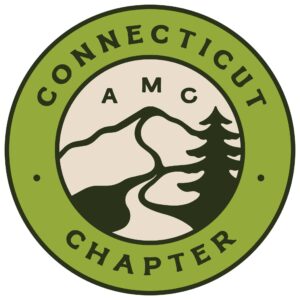Flatwater & Coastal Places to Paddle Basic Resource List for Connecticut
Links to other canoe and sea kayak sites
Canoeing and Sea Kayak Clubs
ConnYak, a non-profit club in Connecticut open to all paddlers interested in sea kayaking http://www.connyak.org
American Canoe Association, dedicated to helping people enjoy the outdoors using kayaks, canoes and rafts since 1880 http://www.acanet.org
Sound Kayakers, an ACA Paddle America Club in western Connecticut and coastal Westchester, NY http://www.kayak-adventure.net
American Canoe Association, New England Division http://canoe-newengland.org
Safe Boating
Connecticut Department of Energy and Environmental Protection (DEEP), Bureau of Outdoor Recreation. Boating Division. Connecticut Boater’s Guide. Hartford, CT.: Connecticut Department of Environmental Protection.. (print edition and internet site) http://www.ct.gov/deep/cwp/view.asp?a=2686&q=322292&depNav_GID=1620
Connecticut DEEP Boating Education https://www.ct.gov/deep/cwp/view.asp?a=2686&Q=322308&depNav_GID=1620&depNav=%7C
U.S. Coast Guard Auxiliary: Boating Courses and Other Safety Informationhttp://cgaux.org
US Power Squadron, sail and power boating http://www.usps.org
American Red Cross – Classes in Swimming and Water Safety, First Aid, CPR and othershttps://www.redcross.org
Boating Safety and Education Connecticut DEP. http://www.ct.gov/dep/cwp/view.aspa=2686&Q=322308&depNav_GID=1620&depNav=|
Expert Advice on matters of Sea Kayaking http://www.atlantickayaktours.com/pages/expertcenter/main-expert-center.shtm
Places
State Boat Launches
https://www.ct.gov/deep/cwp/view.aspa=2686&q=381794&deepNav_GID=160
Connecticut Department of Energy and Environmental Protection (DEEP), Connecticut Coastal Access Guide https://www.depdata.ct.gov/maps/coastalaccess/index.html
Connecticut Coastal Access Guide. http://www.lisrc.uconn.edu/coastalaccess/
Connecticut Department of Energy and Environmental Protection (DEEP), Bureau of Outdoor Recreation. Boating Division.
Connecticut Lakes and Ponds.
https://www.ct.gov/deep/cwp/view.aspa=2719&q=325530&depNav_GID=1625
ConnYak. Connecticut Sea Kayakers. Launch Site Directions.
http://www.connyak.org/Public%20Affairs/Launch_Sites_HTML.htm
Housatonic Valley Association, Housatonic River Paddling Guides https://hvatoday.org/publications/
Rivers Alliance of Connecticut, Connecticut Water Trails
http://www.ctwatertrails.org/main.php
Connecticut River, Old Lyme trail:
http://ctwatertrails.org/putins/oldlymetrail.pdf
Connecticut River, Deep River trail:
http://www.ctwatertrails.org/putins/deeprivertrail.pdf
Mattabesset River Canoe/Kayak Trail. Mattabesset River Canoe/Kayak Trail Guide. June 2007 (second edition).
https://www.conservect.org/wpcontent/uploads/2018/01/Mattabesset_Canoe_Guide_07.pdf
Norwalk Islands Canoe/Kayak Trail. Calf Pasture Beach, Norwalk, Connecticut.https://westcog.org/wpcontent/uploads/2015/09/DocsFinalFinal-Kayak-brochure7-2-2009-revised.pdf
Paddling Down the Willimantic River: From Stafford to Windham, CT. Launching Sites for Canoes & Kayaks. Compiled by the Willimantic River Yacht Club, 1998.
http://www.willimanticriver.org/recreation/paddling.html
Hypothermia and other medical emergencies
Outdoor Action Guide to Hypothermia and Cold Weather Injuries, Princeton University http://www.princeton.edu/~oa/safety/hypocold.shtml
Prevention of hypothermia Atlantic Coast Tours in the Hudson River Valley
http://www.atlantickayaktours.com/pages/expertcenter/main-expert-center.shtml
Lightning NOAA LightningFactsSheet.pdf
Tides and Weather
NOAA Tide Tables
http://tidesandcurrents.noaa.gov/tide_predictions.html?gid=1394#listing
Marine weather
http://www.wunderground.com/MAR/
Books and Pamphlets
Borton, Mark C. et. al.The Complete Boating Guide to the Connecticut River. 2nd edition. Easthampton, MA.: The Connecticut River Watershed Council, Inc. and Embassy Imprint, Inc., 1990 (out of print).
John Sinton, Elizabeth Farnsworth, and Wendy Sinton The Connecticut River Boating Guide, 3rd: Source to Sea (Falcon Guide) (Falcon; 3rd edition, April 1, 2007, CT River Watershed Council)Detels, Pamela and Janet Harris. Canoeing: Trips in Connecticut, the long and short of it…Chester, CT.: Pequot Press, 1977.
Dionne-Dickson, Jeff and Pat Dionne-Dickson. Local Places to Paddle. Avon, CT.: Healing Adventures, LLC and Collinsville, CT., 1999.
Farmington River Watershed Association, Inc. The Farmington River Guide. Simsbury, CT.: The Farmington River Watershed Association, Inc., 1970, rev. 1999.
Hodgins, Richard III and Erika Racz. Connecticut Kayaking. 1st ed. Even Keel Publishing. 2001. (or 2nd ed. 2002)
Jacobs, Robert P., et. Al. A Fisheries Guide to Lakes and Ponds of Connecticut, Including the Connecticut River and Its Coves. Hartford, CT.: Connecticut Department of Environmental Protection, 2002.
Levere, Alan M. Paddler’s Guide to Boating in Connecticut: A Car Topper’s Guide to 41 East to Access Put-in Points. Hartford, CT.: Department of Environmental Protection, 2000.
Maloney, Thomas, et. al. Tidewaters of the Connecticut River, An Explorer’s Guide to Hidden Coves and Marshes. Essex, CT.: River’s End Press, 2001.
Tougias, Michael J. River Days: Exploring the Connecticut River from Source to Sea.Boston, Mass.: Appalachian Mountain Club, 2001.
Venn, Tamsin. Sea Kayaking Along the New England Coast. Boston, MA.: Appalachian Mountain Club, 2004.
Weber, Ken.Paddling Southern New England: 30 Canoe Trips in Massachusetts, Rhode Island, and Connecticut. 2nd edition. Woodstock, Vermont: Backcountry Guides, 2001.
Wilson, Alex and John Hayes. Quiet Water: Massachusetts, Connecticut and Rhode Island: Canoe and Kayak Guide. Boston, Mass.: Appalachian Mountain Club, 2004.
DEP Property. Connecticut Department of Environmental Protection Owned and Managed Property. Compiled by James C. Bogar Jr. 1998.
Quick Waters, Smooth Waters: A Paddlers’ Map of the Farmington River. Text by David Sinish. Drawn by Carrie Sinish. Sinishworks, 1996.
Magazines
AMC Outdoors magazine, Appalachian Mountain Clubhttps://www.outdoors.org/trip-ideas-tips-resources/amc-outdoors-magazine
Atlantic Coastal Kayaker. P.O. Box 520, Ipswich, MA 01938. http://www.atlanticcoastalkayaker.com/
Canoe & Kayak. 10526 NE 68th St., Suite 3, Kirkland, WA 98033.http://www.canoekayak.com/
Sea Kayaker. Sea Kayaker Inc., 7001 Seaview Ave., NW, Suite #135, Seattle, Washington. 98117. http://www.seakayakermag.com/







